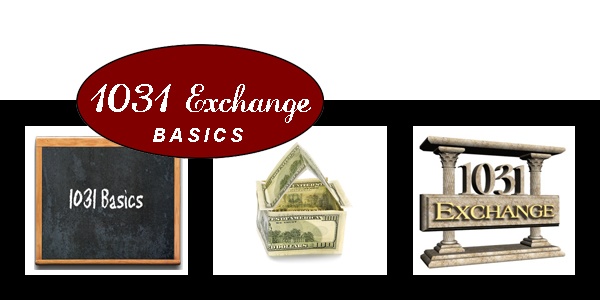7 Steps To A Successful 1031 Tax-Deferred Exchange
Step 1
Consult with your tax and financial advisors to determine if a tax-deferred exchange is appropriate for your circumstances and compatible with your investment goals.
Step 2
Listing the Relinquished Property for sale with a licensed real estate broker. The Exchanger will list the Relinquished Property with a real estate broker. The broker/agent will disclose the intent to complete an exchange in the listing agreement.
Step 3
Offer, Counter Offer and Acceptance. The Exchanger enters into contract with the Buyer for the sale/exchange of the Relinquished Property. The broker/agent discloses the Seller/Exchanger's intent to exchange into the Purchase Agreement and Receipt for Deposit.
Step 4
Open Escrow for the Relinquished Property and coordinate with the Facilitator. All earnest money deposits should be placed with the Escrow Company. The Facilitator prepares the exchange agreement and the necessary amendments and assignments and coordinates with the escrow holder. The close of escrow of the Relinquished Property and the receipt of the net proceeds by the Facilitator completes Phase I of a tax-deferred exchange. Important: The exchange documents must be in place and signed by all parties prior to close of escrow.
Step 5
Identify Replacement Property. The Exchanger must identify all Replacement Properties with 45 days from the close of escrow of the Relinquished property. The identification must be in writing, signed by the Exchanger, and sent to the Facilitator by midnight of the 45th days.
Step 6
Writhing the Contract for the Replacement Property. After closing on Relinquished Property the Exchanger has 180 days to acquire the Replacement Property. With the help of his or her agent the Exchanger enters into contract to purchase the Replacement Property from the Seller. In the contract to purchase the agent discloses the Exchanger's intent to complete the exchange and obtains the Seller's cooperation.
Step 7
Open escrow for the Replacement Property. The Facilitator prepares the Phase II Exchange documents and coordinates with the Replacement Property Escrow holder. At the instruction of the Facilitator the escrow holder deeds the Replacement Property from the seller directly to the Exchanger. The funds held in trust by the Facilitator are placed in escrow and the Replacement Property is purchased by Facilitator from the seller. The transaction is closed as Phase II of a delayed exchange.
We Can Help You Make a Smooth & Successful 1031 Exchange

